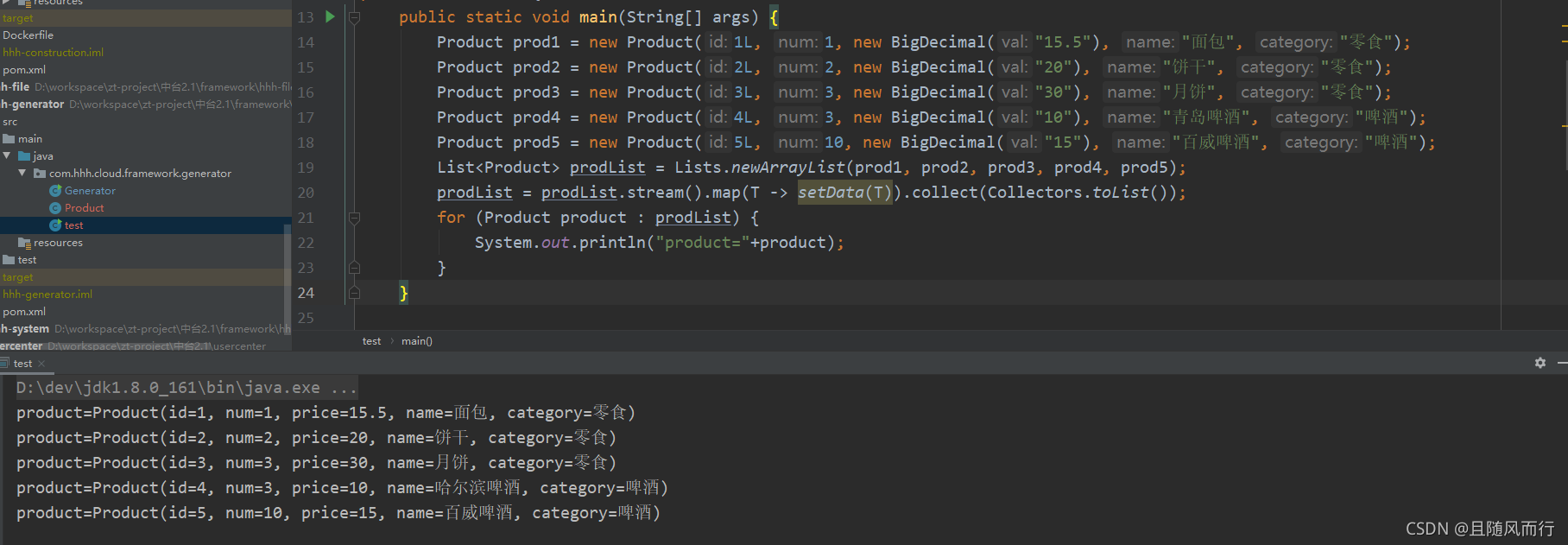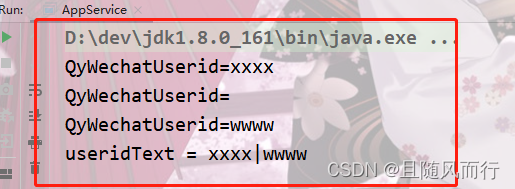Java函数式编程Stream.collect()方法使用小结
steam():把一个源数据,可以是集合,数组,I/O channel, 产生器generator 等,转化成流。
Collectors(): 类实现了很多归约操作,例如将流转换成集合和聚合元素。通过stream().collect()方法可简单获得我们所需要的数据结构。
先创建一个prodList的集合数据
@Data
public class Product {
private Long id;
private Integer num;
private BigDecimal price;
private String name;
private String category;
public Product(Long id, Integer num, BigDecimal price, String name, String category) {
this.id = id;
this.num = num;
this.price = price;
this.name = name;
this.category = category;
}
}
Product prod1 = new Product(1L, 1, new BigDecimal("15.5"), "面包", "零食");
Product prod2 = new Product(2L, 2, new BigDecimal("20"), "饼干", "零食");
Product prod3 = new Product(3L, 3, new BigDecimal("30"), "月饼", "零食");
Product prod4 = new Product(4L, 3, new BigDecimal("10"), "青岛啤酒", "啤酒");
Product prod5 = new Product(5L, 10, new BigDecimal("15"), "百威啤酒", "啤酒");
List<Product> prodList = Lists.newArrayList(prod1, prod2, prod3, prod4, prod5);
- 将集合里的某个参数拿出来重新生成一个集合,如下将
prodList里的name参数重新生成一个集合
List<String> nameList = prodList.stream().map(item -> item.getName()).collect(Collectors.toList());

- 对集合里的数据进行处理,如下将集合里的
青岛啤酒名称改为哈尔滨啤酒
public class test {
public static void main(String[] args) {
Product prod1 = new Product(1L, 1, new BigDecimal("15.5"), "面包", "零食");
Product prod2 = new Product(2L, 2, new BigDecimal("20"), "饼干", "零食");
Product prod3 = new Product(3L, 3, new BigDecimal("30"), "月饼", "零食");
Product prod4 = new Product(4L, 3, new BigDecimal("10"), "青岛啤酒", "啤酒");
Product prod5 = new Product(5L, 10, new BigDecimal("15"), "百威啤酒", "啤酒");
List<Product> prodList = Lists.newArrayList(prod1, prod2, prod3, prod4, prod5);
prodList = prodList.stream().map(T -> setData(T)).collect(Collectors.toList());
for (Product product : prodList) {
System.out.println("product="+product);
}
}
private static Product setData(Product t) {
if (StringUtils.equals(t.getName(), "青岛啤酒")) {
t.setName("哈尔滨啤酒");
}
return t;
}
}

- 将集合需要的参数数据转化成
Map,如下将id与name转化成Map
// 转为Map
Map<Long, String> idMap = prodList.stream().collect(Collectors.toMap(Product::getId, Product::getName));
System.out.println("idMap="+idMap);

- 将集合通过某个参数进行分组,对组织人员进行部门分组的时候有奇效,如下将对
category分组
// 分组
Map<String, List<Product>> groupListMap = prodList.stream().collect(Collectors.groupingBy(Product::getCategory));
System.out.println("nameList="+groupListMap);
//输出结果为:
nameList={啤酒=[Product(id=4, num=3, price=10, name=青岛啤酒, category=啤酒), Product(id=5, num=10, price=15, name=百威啤酒, category=啤酒)],
零食=[Product(id=1, num=1, price=15.5, name=面包, category=零食), Product(id=2, num=2, price=20, name=饼干, category=零食), Product(id=3, num=3, price=30, name=月饼, category=零食)]}
- 将集合通过某个参数进行拼接,如下将
name进行拼接
// 拼接
String nameJoin = prodList.stream().map(Product::getName).collect(Collectors.joining(","));
System.out.println("nameJoin="+nameJoin);

- 统计集合的总数
//统计总数
Long count = prodList.stream().collect(Collectors.counting());
System.out.println("count="+count);

7.将集合通过某个参数进行拼接(忽略空值)StringUtils.isNotEmpty(s)).collect(Collectors.joining("|")
public static void main(String[] args) {
List<SysAccount> list = new ArrayList<>();
SysAccount sys = new SysAccount();
sys.setQyWechatUserid("xxxx");
list.add(sys);
SysAccount sys2 = new SysAccount();
sys2.setQyWechatUserid("");
list.add(sys2);
SysAccount sys1 = new SysAccount();
sys1.setQyWechatUserid("wwww");
list.add(sys1);
for (SysAccount account : list) {
System.out.println("QyWechatUserid="+account.getQyWechatUserid());
}
String useridText = list.stream().map(SysAccount::getQyWechatUserid).filter(s -> StringUtils.isNotEmpty(s)).collect(Collectors.joining("|"));
System.out.println("useridText = " + useridText);
}

8.过滤对象中的空数据字段.filter(s -> s.getName() != null && StringUtils.isNotBlank(s.getName()))
List<BeanMap> collect = sysResourceBeans.stream().filter(s -> s.getName() != null && StringUtils.isNotBlank(s.getName())).map(BeanMap::create).collect(Collectors.toList());
以上就是我在开发中常用到的Stream.collect()方法。